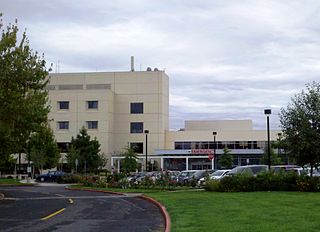November 29, 2012 -- Poor Oregonians will receive an extra $2.033 billion in healthcare from mid-2011 through mid-2013, according to the latest estimates of the impact of a state tax on hospitals. Yet even many within the industry still don’t understand the state’s so-called provider tax, according to Judy Mohr-Peterson, director of medical assistance programs with the Oregon Health Authority.
Hospitals will pay $685 million by the end of the current two-year fiscal biennium, Mohr-Peterson said. The Oregon Health Plan must use that money to pay for medical care at those hospitals, and to qualify for roughly $1.4 billion in federal reimbursement for OHP care. But there’s no guarantee that any specific hospital will get back as much in reimbursements as it pays in taxes.
That directly contradicts what some in the industry – including the executive of an Oregon physicians’ group—believe. Rumors have circulated that hospitals are using their provider tax payments as a federal tax deduction, even though they then are reimbursed exactly for what they pay.
“When hospitals get money back, it’s in the aggregate, not by individual hospital,” Mohr-Peterson said. Payments are made based on the number of Oregon Health Plan patients seen per year. In a hypothetical situation where 10 hospitals each paid a tax of $10, for example, a hospital that sees no OHP patients might pay $10 and get nothing back, while another hospital that sees many patients might pay $10 but get $20 in reimbursements. The total amount paid to all participating hospitals matches the amount collected, but no specific hospital is guaranteed to be made whole. “Federal law actually prevents us from giving the exact amount back to the hospital that pays the tax,” Mohr-Peterson said.
Tax collections are deposited in a state account, and then paid out according to complex Medicaid reimbursement formulas, she said.
Even with the higher tax, hospitals are being paid less to treat OHP patients than they received just two years ago.
If the Legislature had not acted in 2011, cuts to Medicare funding would have required OHP to cut reimbursements by 19 percent in the current biennium, Mohr-Peterson said. Instead, hospital officials agreed to go along with a legislative proposal to extend and raise a tax they’d been paying for seven years.
The state’s largest hospitals have been supporting the Oregon Health Plan through provider taxes since 2004, when they negotiated a fee that would raise $202 million over 5.5 years, according to Oregon Association of Hospitals and Health Systems figures.
The 2011 tax hike, which raised collections to 4 percent of net revenue at Oregon’s 26 largest hospitals, has had a substantially bigger impact. By raising roughly $685 million from hospitals, the state is able to qualify for federal matching funds that keep the overall cut to Medicare payments down to 10 percent statewide for all care, both inside and outside hospitals, Mohr-Peterson said.
“When hospitals taxed themselves at a higher rate we could leverage additional federal dollars so they did not have to take that 10 percent reduction” in Medicaid reimbursement,” she said. “Their reduction was much less – about 2 percent.”
Even so, hospitals often carp that they are not being paid enough to cover the costs of caring for Oregon Health Plan patients, who are funded through the state’s Medicaid program.
“Hospitals are not fully reimbursed,” said Brian Terrett, spokesman for Legacy Health, who said that lower reimbursements are driving cost-saving measures across the Legacy system.
Salem Hospital estimated that Medicaid payments fell short of its total expenses by $47.8 million in its fiscal year 2011, and by $28.6 million in FY 2010, according to tax forms.
Just how much Legacy, Salem Hospital or others pay in new taxes or receive in higher Oregon Health Plan reimbursements is unclear, however.
“When it comes to the specific amounts that each individual hospital gets back, that is not open to public disclosure,” Mohr-Peterson said. More details about Oregon’s hospital provider tax and its big picture are being compiled now, however, and will be presented in the weeks ahead as state agencies present their budgets ahead of the coming Legislative session.
Image for this story by M.O. Scott (CC-BY SA 3.0) via Wikimedia Commons.
UPDATE: In an earlier version of this story, the Oregon Health Plan was incorrectly described as a Medicare program. OHP is a Medicaid program. The Lund Report regrets the error.